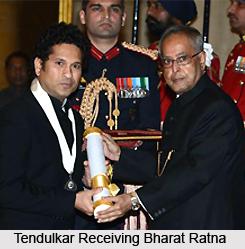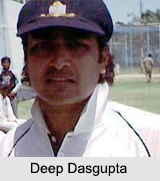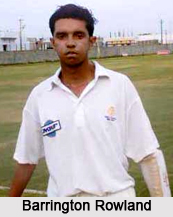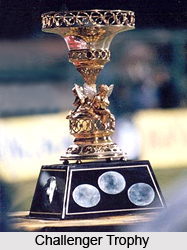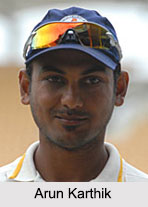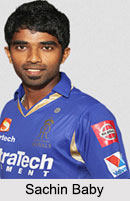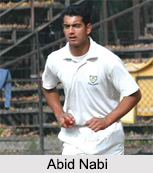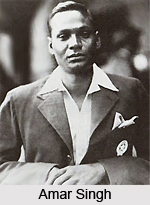 Amar Singh, also known as Ladhabhai Nakum Amar Singh Lodha, was an Indian cricket player who primarily played in Test matches. He was a right-arm fast-medium bowler as well as an effective lower-order batsman. He had played for India in seven Test matches prior to World War II, bagging 28 wickets. He was accredited as the first Indian fast bowler and all-rounder and also the first Indian to receive a Test cap. He was also the first half century scorer of India in Test cricket which he scored in the very first Test match of India.
Amar Singh, also known as Ladhabhai Nakum Amar Singh Lodha, was an Indian cricket player who primarily played in Test matches. He was a right-arm fast-medium bowler as well as an effective lower-order batsman. He had played for India in seven Test matches prior to World War II, bagging 28 wickets. He was accredited as the first Indian fast bowler and all-rounder and also the first Indian to receive a Test cap. He was also the first half century scorer of India in Test cricket which he scored in the very first Test match of India.
Early Life of Amar Singh
Amar Singh was born on 4 December 1910. He also had an elder brother named Ladha Ramji who belonged to the same profession and was an aggressive fast bowler. He had played for India in Bombay in a Test against England. Amar Singh"s nephew V. L. Nakum was also a player of first class cricket.
Career of Amar Singh
Amar Singh was involved in the first class cricket for about nine years during which he played 92 first-class matches he took 508 wickets at a bowling average of 18.35. As a batsman also he had scored five centuries. In domestic cricket, he became the first Indian who completed the all-rounder"s double of 1000 runs and 100 wickets in the Ranji Trophy. In 1933-34 seasons against England, he scored 48 in the second essay after grabbing 7 for 86 off 44.4 overs. In the year 1936, at Lord"s, he took 6 for 35 from his 25.1 overs. In the following Test he scored 48 not out and saved India from innings defeat. He also captured 36 wickets at 16.66 in the unofficial five-Test series against Lord Tennyson"s MCC team of 1937-38.
Amar Singh had played in the club cricket for Colne in the Lancashire League. He was the first overseas professional of the club. Amar Singh exhibited one of his best performances in 1934 Chennai match in which he took 7 for 86. On six occasions he bowled more than thirty-five overs in an innings. Amar Singh had the ability to exploit a new ball well making it swing both ways. His aggressive field setting and his aim towards the stumps while bowling were credited for his high amount of wickets. His batting on the other hand was also equally aggressive as his bowling. He was pitch hitter and in some occasions he was shifted up the batting order. His fielding and catching was also appreciable. In about 92 first class matches, he had 77 catches.
Death of Amar Singh
Amar Singh died of typhoid in the year 1940.

